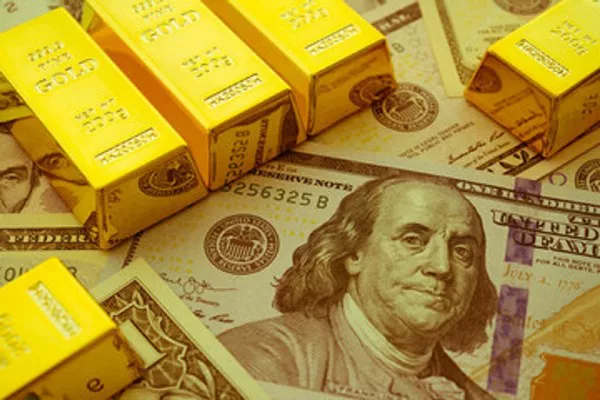Gold futures have hit unprecedented levels today, with the April futures contract surpassing the $2,900 per troy ounce mark for the first time in history. This achievement marks the third consecutive trading session of record-breaking prices. Although gold briefly touched over $2,900, it settled at $2,883.50 by 4:40 PM EST, posting a modest gain of $7.70 or 0.27%.
Contributing Factors to Gold’s Rally
The surge in gold prices can be attributed to a combination of factors, primarily the growing global trade tensions and a weakening U.S. dollar. Here’s a closer look at what’s driving the rally:
International Trade Tensions
Gold’s price spike comes amid increasing concerns over international trade relations following President Trump’s recent tariff announcements.
February 1, Trump introduced significant tariffs: 25% on all non-energy imports from Mexico and Canada and a 10% tariff on Chinese imports. Although tariffs on Mexico and Canada have been temporarily suspended for 30 days, the U.S. proceeded with its stance on China.
China’s Retaliatory Measures
In response, China swiftly announced retaliatory tariffs, including a 15% tariff on U.S. coal and liquefied natural gas imports, which will take effect February 10.
Additional measures included a 10% tariff increase on American crude oil, automotive products, agricultural equipment, and export controls on critical minerals.
Weakening U.S. Dollar
The U.S. dollar index has fallen by 1.77% since Monday, now standing at 107.47, marking a 0.34% decline today. This weakening of the dollar has fueled further demand for gold, often seen as a safe-haven asset during times of uncertainty.
Market Implications
The escalating trade war tensions between the U.S. and China are causing investors to flock to gold, a traditional refuge in times of crisis. The implementation of tariffs by both countries has heightened concerns about global economic stability, which, in turn, drives investors to seek protection in safe-haven assets like gold.
As both China and the U.S. exchange retaliatory measures, the trade war seems to have entered a more aggressive phase. With tensions high, the precious metal is likely to see continued demand from investors looking to hedge against economic volatility and a weaker dollar.
What Lies Ahead?
With the U.S.-China trade war still in its early stages, global trade relations remain a key area of concern. If tensions continue to escalate, gold prices may maintain their upward trajectory, especially with the U.S. dollar weakening further. Investors are closely monitoring these developments, as they could have long-term impacts on international trade, global growth, and market sentiment.
Gold’s impressive gains today serve as a clear signal of the market’s current cautious outlook amid growing trade disputes.
Related topics:


